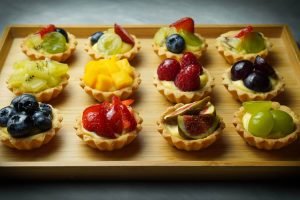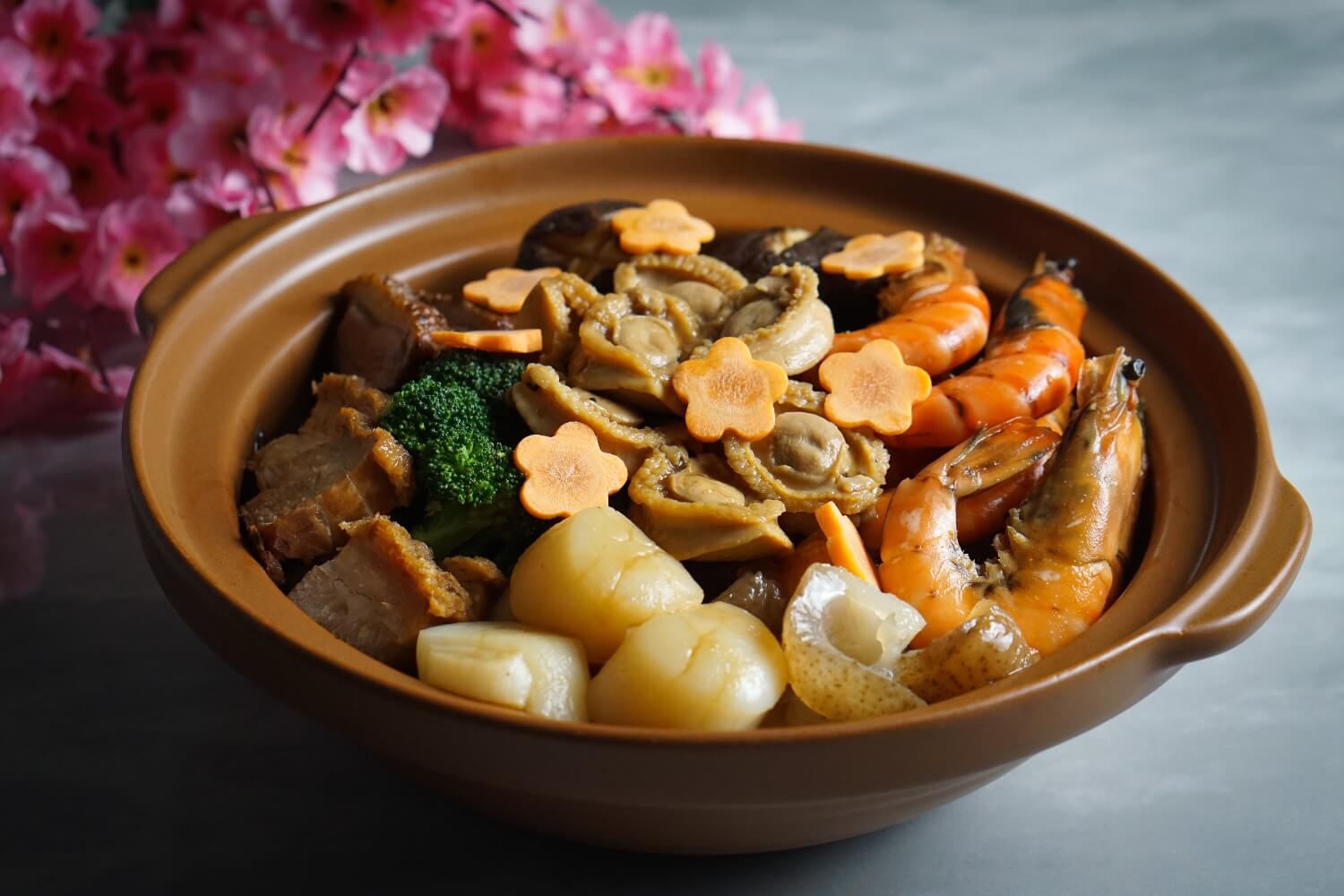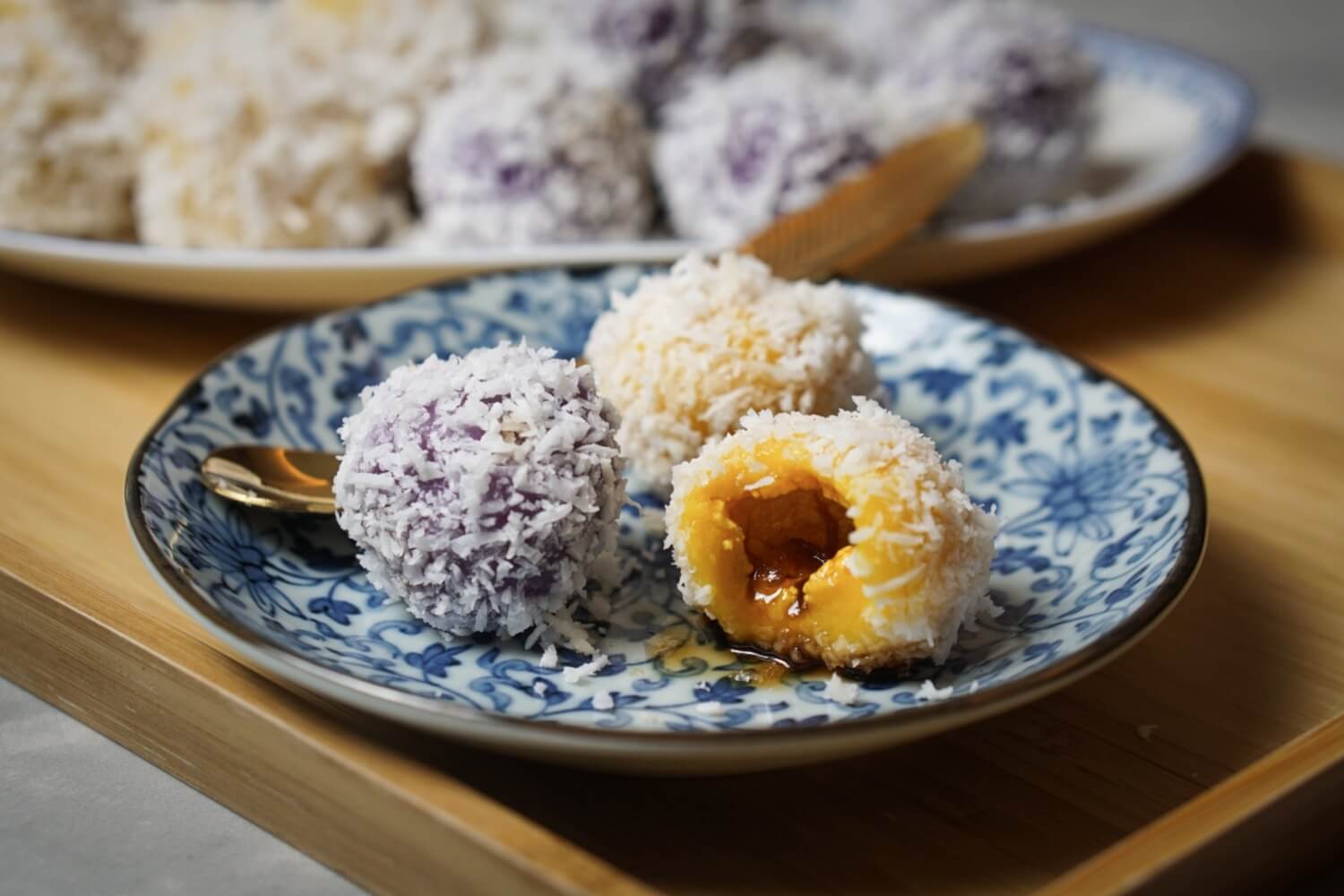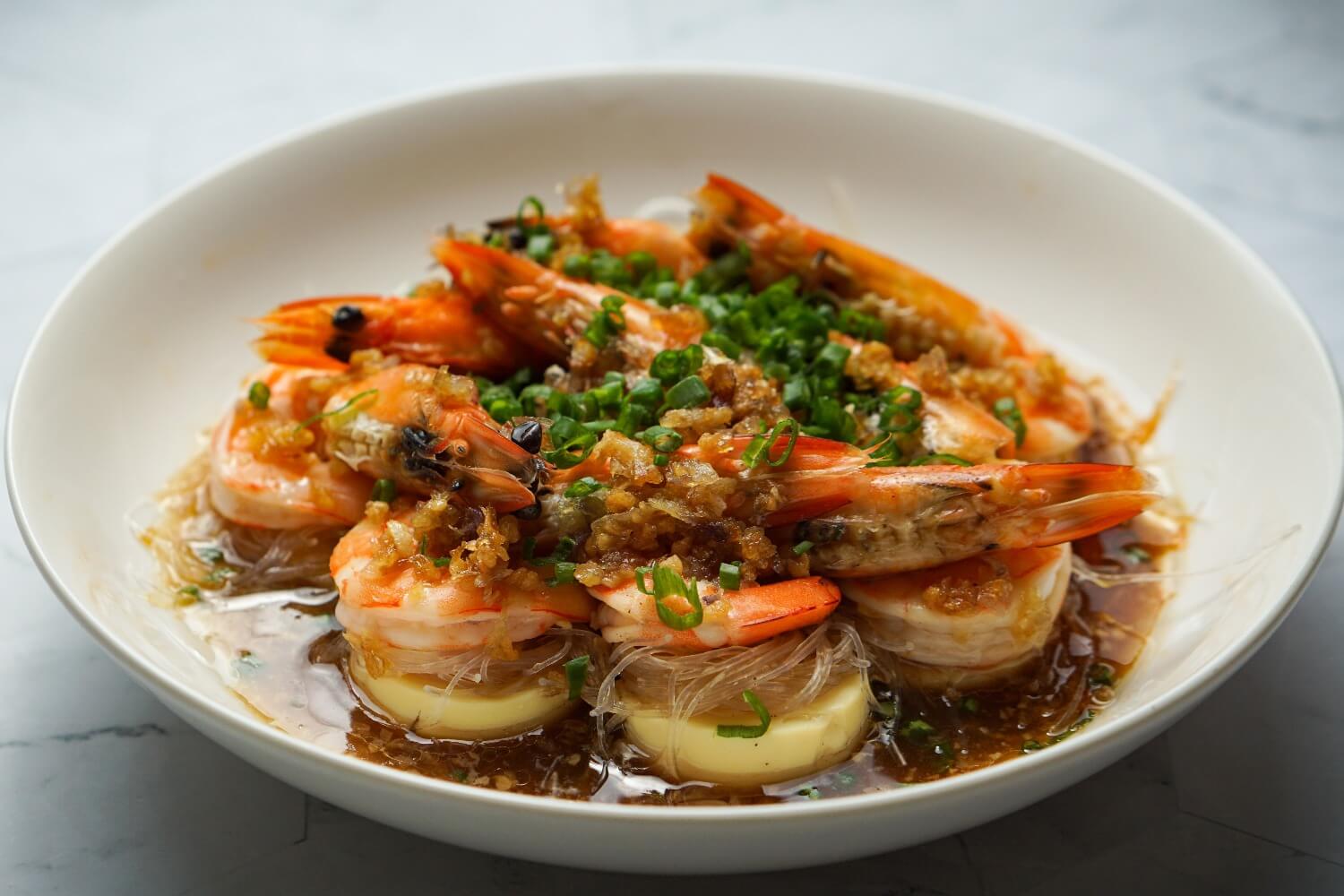This Egg Tart post may contain affiliate links. Please read my disclaimer.
Creamy custardy and mildly sweet egg custard in a buttery flaky melt-in-your-mouth pastry tart, handmade from scratch and baked fresh from the oven. I love to enjoy these warm egg tarts with a cup of teh-c-kosong, Singapore’s version of milk tea with no sugar. This is the perfect afternoon tea break for me.
In Singapore, egg tarts can be found commonly in traditional bakeries, dim sum restaurants and and food stalls that sell snacks. These Hong Kong-style egg tarts, aka 蛋撻, or ‘daan tat’ in Cantonese, can be quite addictive! And you can enjoy it for breakfast, afternoon tea or coffee break or after-dinner snacks.
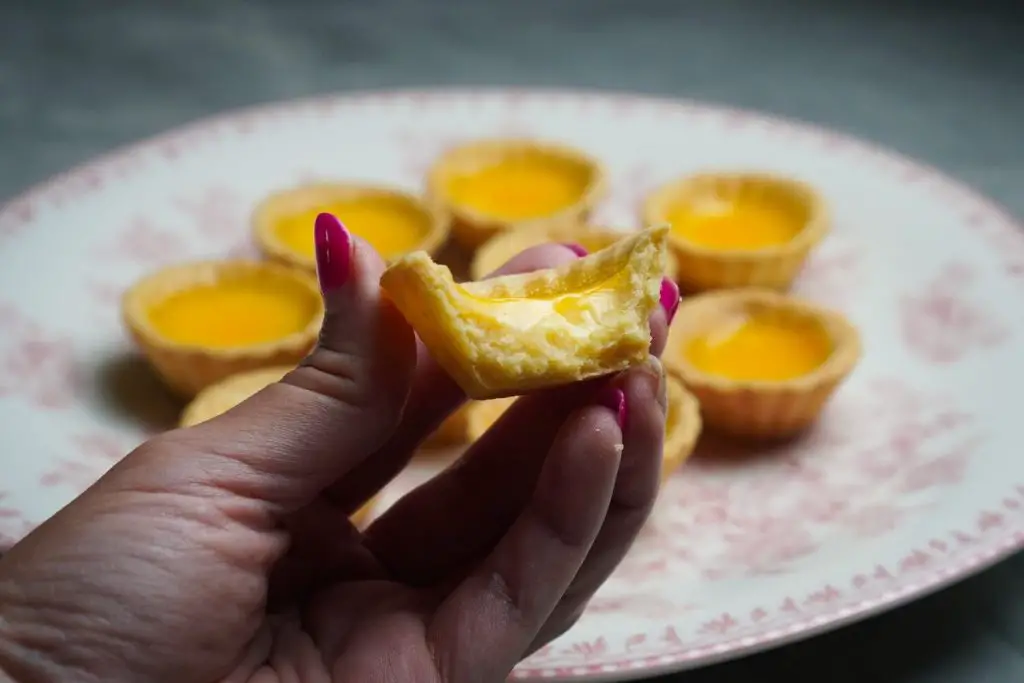
In this recipe, the pastry tart is made with a shortbread crust or pâte sucrée, which is my favourite way of making pastry crust or cookies. It’s extremely easy to make, with very simple steps and quick to put together. The egg custard requires a few simple ingredients to put together. And of course, like the majority of all my recipes on this website, I used a sugar substitute as a sweetener, either monkfruit sweetener or stevia sweetener. The replacement of these sweeteners to sugar is 1:1 ratio.
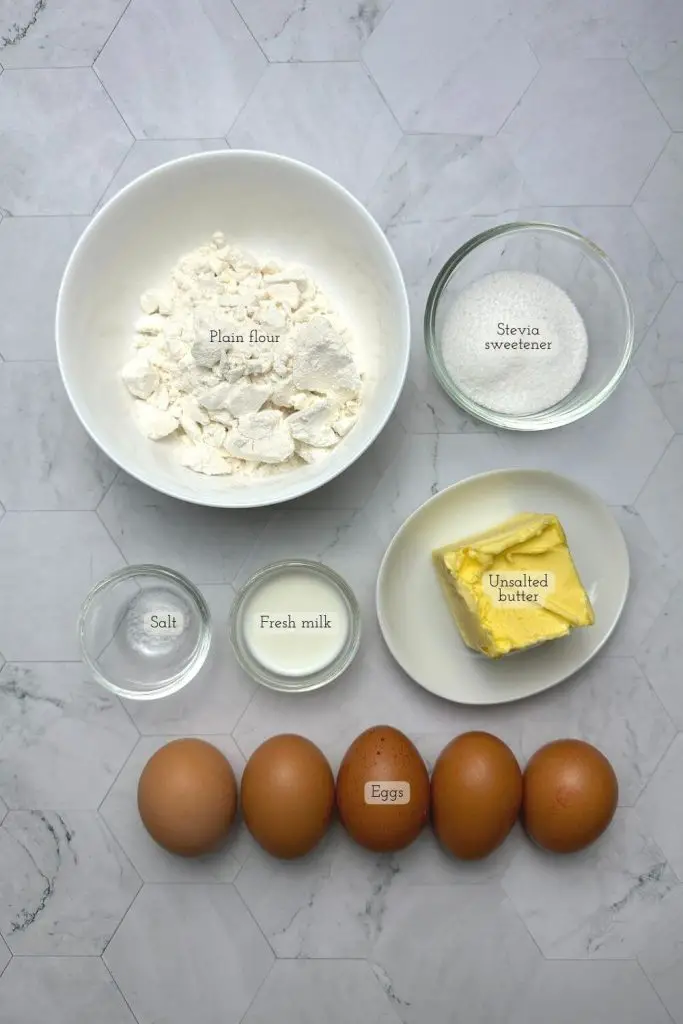
What is the difference between Chinese egg tart and Portuguese egg tart
ICYDK, there is another version of egg tart called the Portuguese egg tart, or pastel de nata in Portuguese. I’ve had the original Portuguese egg tart in the bakery that first made it in Lisbon, Portugal and it is really to-die-for. Nowhere else in this world is able to replicate that soft tender puff pastry tart with lava-like egg custard filling!
Each has its beautiful characteristics. The Portuguese egg tart has a caramelized top over the egg custard, typically made out of egg yolks and cream, and a thin layered crispy puff pastry shell. While the Hong Kong version of the egg tart has an evenly baked jiggly egg custard, made out of whole eggs, with a denser and crumbly pastry crust.
Tips on making the egg tart
- To make the tart shell, it’s essential to use very cold unsalted butter cubes. I’d suggest to cut the butter into cubes and keep it chilled in the fridge until ready to use. The size of each butter cubes can be about 2cm. The tart shell can also be made into fruit tarts, similarly the same pastry dough recipe can also be made into pineapple tarts, which is a must-have during Chinese New Year.
- I am using stevia sweetener in this whole recipe. If you prefer to use normal sugar, the substitution of the sugar is 1 to 1. The amount of sweetener I used in the pastry is already minimal so I would suggest not to reduce it. But you can adjust the sweetener in the egg filling slightly if you prefer it more sweet. The current amount of sweetener I used is yielding a not-so-sweet custard.
- There are recipes that requires the adding of whipping cream into the milk custard. I didn’t add that in this recipe as I want to keep it the fat amount low, as the egg tart is known to be quite high in calories.
- While making the egg custard, sieve the egg filling at least twice to remove any unbreakable parts of the egg or undissolved sweetener. This ensures that the egg custard turns out smooth and silky.
- There are many recipes out there that tells you the different temperatures and methods in baking. I have tested 2 methods here:
- Bake the tart shells at 170C or 338F for 10 minutes. Fill the tart shells with the egg filling, then bake at 120C or 248F for another 20 minutes. Place the tarts on middle rack. Leave the oven door slightly open for another 5 minutes.
- Fill the raw tart shells with egg custards and bake at 220C or 428F on lower rack for 12 minutes and leave the oven door slightly open for 10 minutes.
- You can see below the result, left is baked at 170C / 120C for 30 minutes, right is baked at 220C for 12 minutes. I prefer the one on the left as the egg custard is smooth and evenly baked. While the right has a little bloatedness as it’s baked at a much higher temperature causing the pastry tart to be darker and tougher, and an air pocket inside the egg custard.
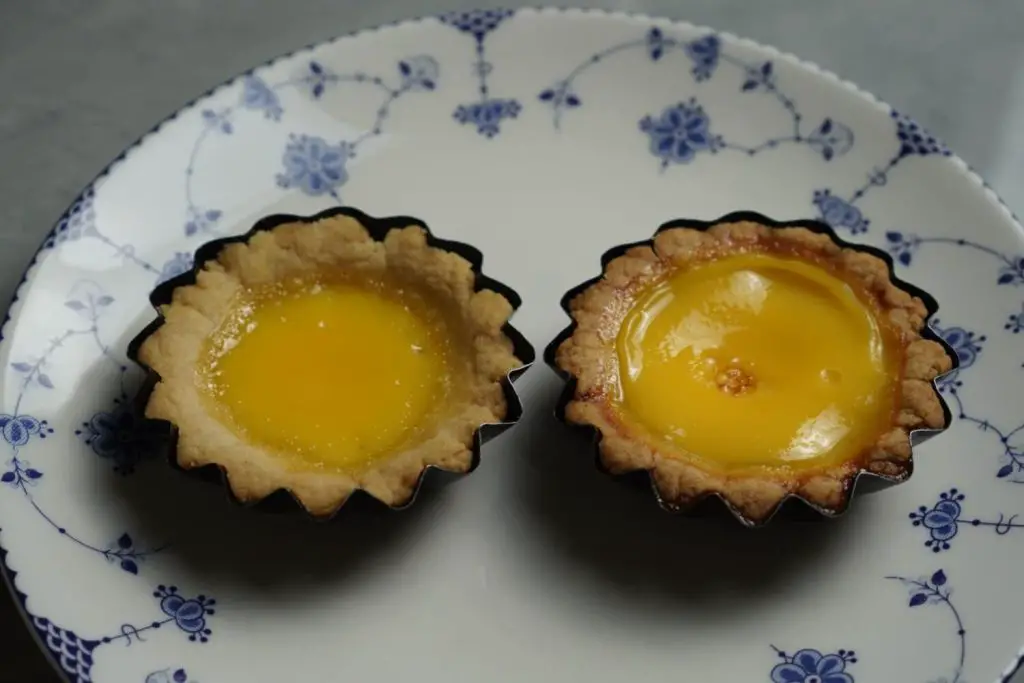
Watch how to make egg tart on YouTube
Pin now, cook later
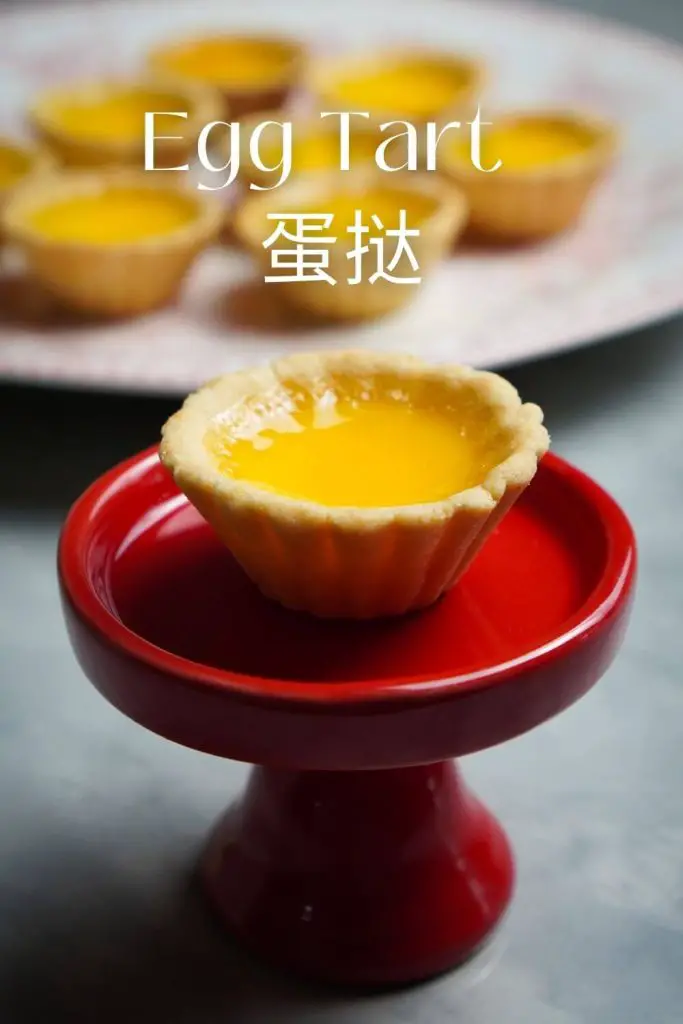
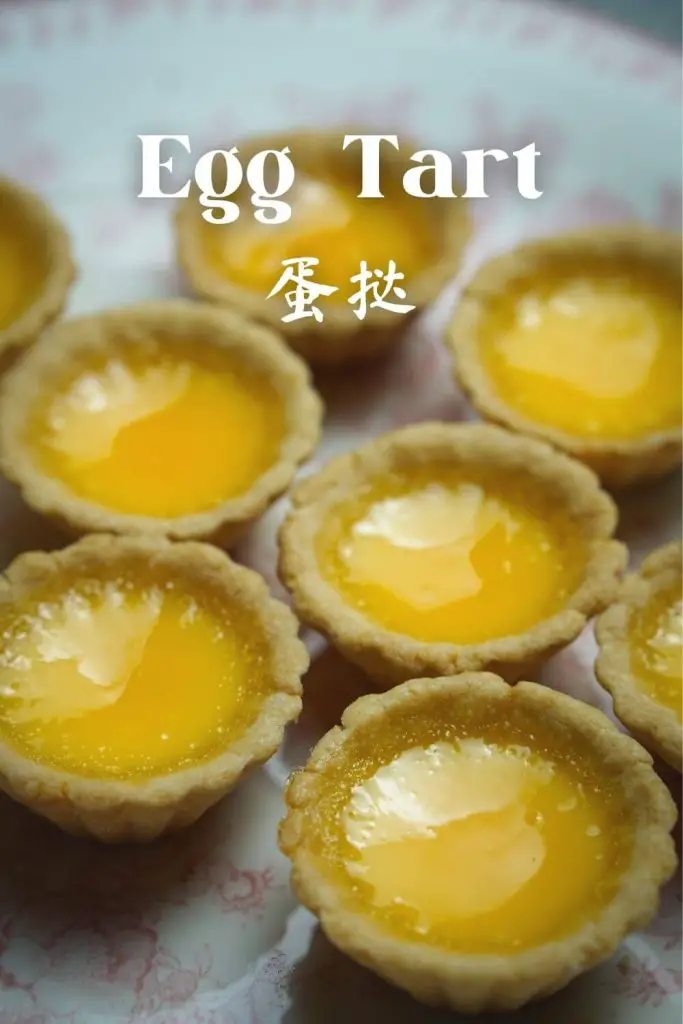
Egg Tart 蛋挞 (Refined Sugar-Free)
Ingredients
Tart shell (yields 460g dough)
- 250 g plain flour
- 1 medium egg room temperature
- 50 g stevia sweetener
- ⅛ tsp fine salt
- 120 g unsalted butter cold and cut into 2cm cubes
Egg custard
- 100 g stevia sweetener
- 270 ml water
- 4 large eggs room temperature, each egg about 57g without shell
- 50 ml fresh milk room temperature
Instructions
Make the tart shell
- Add 250 g plain flour, 50 g stevia sweetener and 1/8 tsp fine salt into a food processor. Pulse for a few seconds to mix well.250 g plain flour, 50 g stevia sweetener, 1/8 tsp fine salt
- Add the very cold butter cubes.Note: Cut 120 g unsalted butter into 2cm cubes in advance. Keep chilled in the fridge until ready to use.120 g unsalted butter
- Pulse until it turns into fine sandy crumbs.
- Add 1 medium egg and pulse until and mix until larger clusters or a loose dough is formed.1 medium egg
- Transfer the mixture into a large mixing bowl. Use your hands to press the mixture together to form a pastry dough.
- Divide the pastry dough into 16g (I'm using 2-inch tart mould). Press the pastry dough into the shape of the mould, pressing gently on the sides to slide it down and cut off any excess at the edge with a knife. The crust should be about 3mm thick.Note: If you are using a 2.5-inch mould, the dough weight should be about 25g.
- Poke the bottom of the pastry with a fork to make small holes. Cover with cling wrap. Put in the fridge to rest and chill for at least 1 hour, or up to 24 hours.
Make the egg custard filling
- Boil 270 ml water.Then add 100 g stevia sweetener into the hot water and stir until the sweetener melts completely.Let it cool completely. Note: do this in advance as it takes time for the water to cool down completely.270 ml water, 100 g stevia sweetener
- Add 4 large eggs into a mixing bowl and beat the eggs until slightly frothy.4 large eggs
- Add 50 ml fresh milk and stevia sweetener mixture. Mix until well incorporated.50 ml fresh milk
- Sieve the egg mixture twice.
Bake the egg tarts
- Preheat the oven on 170C or 338F.Transfer the hard chilled tart shell dough into the oven straight from the fridge. Place at middle rack. Bake for 10 minutes until golden brown. Note: I'm using convection oven with top and bottom heating and fan settings. If you are using conventional oven, allow for about 3-5 minutes more for baking.
- After 10 minutes, immediately reduce oven temperature to 120C or 248F.
- While the tart shells are still hot, quickly pour the egg mixture into the tart shell up to 90% to 95% full. Use a spoon to scoop out the air bubbles.Note: the egg custard will reduce slightly after baking.
- Quickly place the tart shells with egg filling into the oven middle rack. Bake for 20 minutes at 120C or 248F. Note: I'm using convection oven with top and bottom heating and fan settings. If you are using conventional oven, allow for about 5 minutes more for baking.
- After 20 minutes, turn off the oven heat. The egg custard should become firm with the centre part still slightly wet and jiggly after the 20 minutes is up. Leave the egg tarts in the oven while you open the oven door slightly for another 5 minutes to let the egg custard solidify in the oven.
- Remove from oven and let the egg tarts cool completely before removing it from the mould. Best enjoy while warm.
Video
Notes
- To make the tart shell, it’s essential to use very cold unsalted butter cubes. I’d suggest to cut the butter into cubes and keep it chilled in the fridge until ready to use. The size of each butter cubes can be about 2cm. The tart shell can also be made into fruit tarts, similarly the same pastry dough recipe can also be made into pineapple tarts, which is a must-have during Chinese New Year.
- I am using stevia sweetener in this whole recipe. If you prefer to use normal sugar, the substitution of the sugar is 1 to 1. The amount of sweetener I used in the pastry is already minimal so I would suggest not to reduce it. But you can adjust the sweetener in the egg filling slightly if you prefer it more sweet. The current amount of sweetener I used is yielding a not-so-sweet custard.
- There are recipes that requires the adding of whipping cream into the milk custard. I didn’t add that in this recipe as I want to keep it the fat amount low, as the egg tart is known to be quite high in calories.
- While making the egg custard, sieve the egg filling at least twice to remove any unbreakable parts of the egg or undissolved sweetener. This ensures that the egg custard turns out smooth and silky.
- There are many recipes out there that tells you the different temperatures and methods in baking. I have tested 2 methods here:
- Bake the tart shells at 170C or 338F for 10 minutes. Fill the tart shells with the egg filling, then bake at 120C or 248F for another 20 minutes. Place the tarts on middle rack. Leave the oven door slightly open for another 5 minutes.
- Fill the raw tart shells with egg custards and bake at 220C or 428F on lower rack for 12 minutes and leave the oven door slightly open for 10 minutes.
- You can see below the result, left is baked at 170C / 120C for 30 minutes, right is baked at 220C for 12 minutes. I prefer the one on the left as the egg custard is smooth and evenly baked. While the right has a little bloatedness as it’s baked at a much higher temperature causing the pastry tart to be darker and tougher, and an air pocket inside the egg custard.
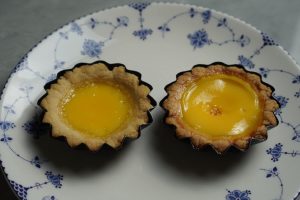

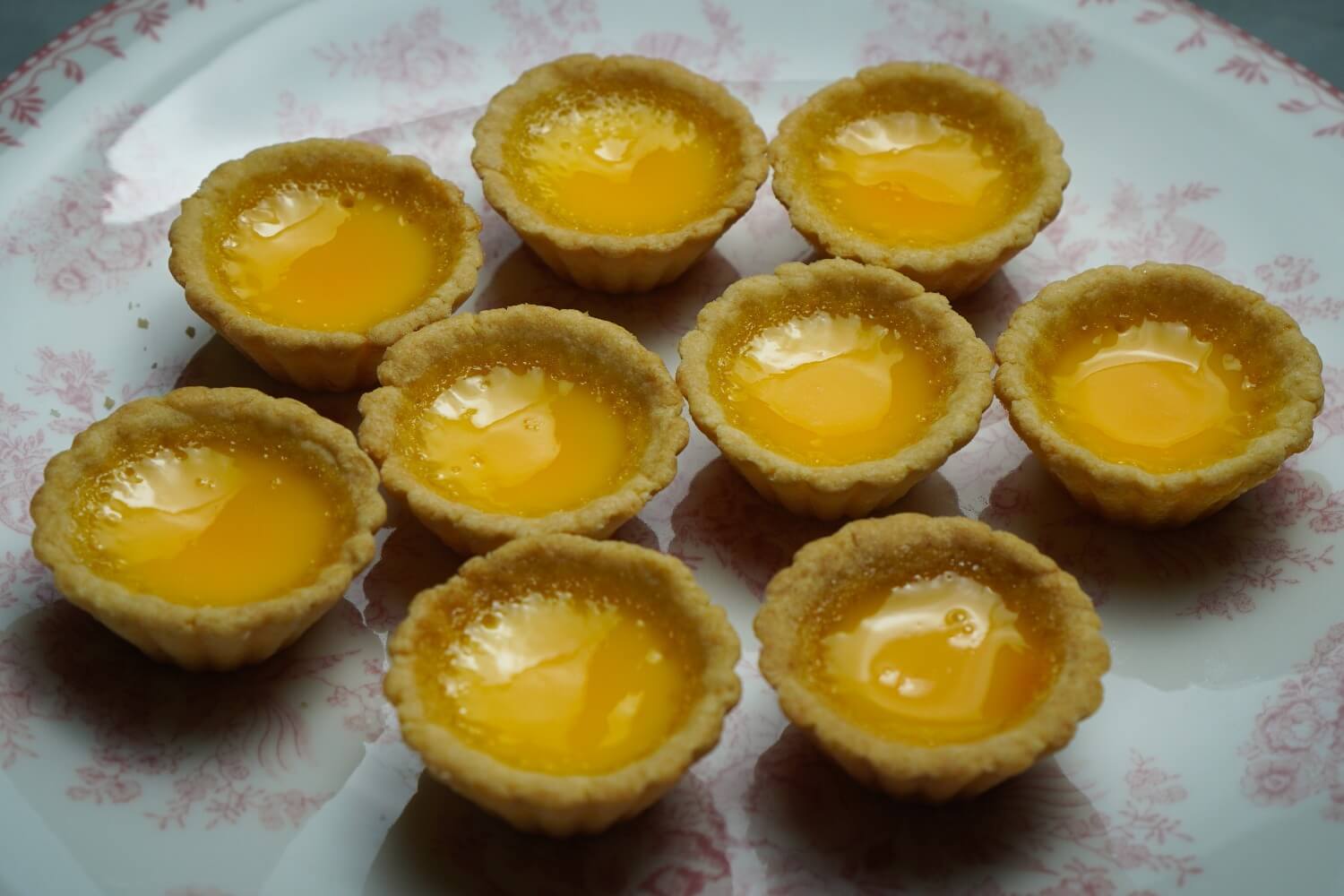
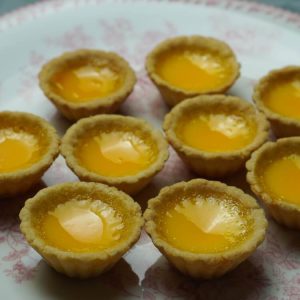
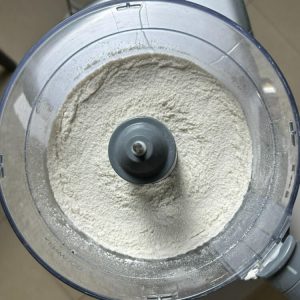

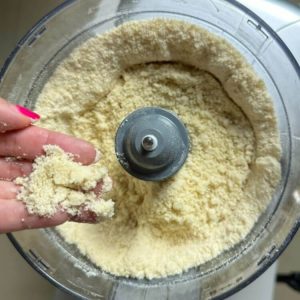
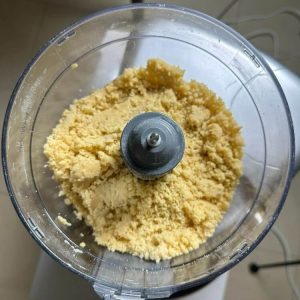
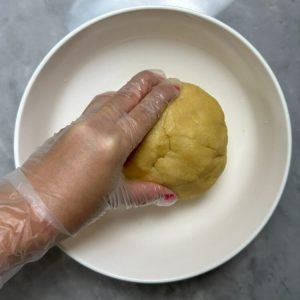
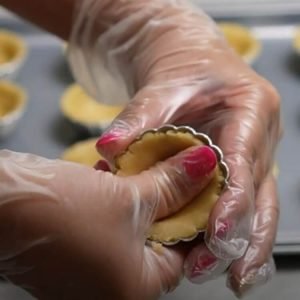
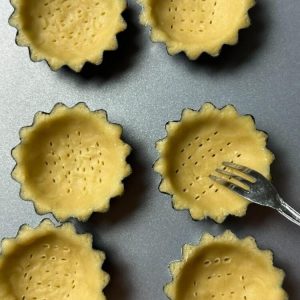
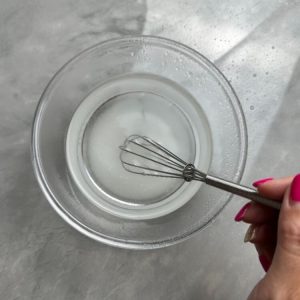

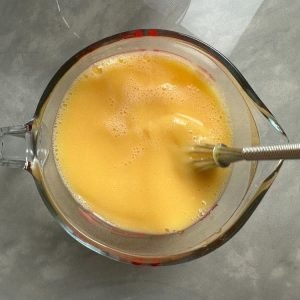


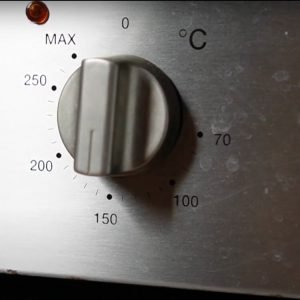


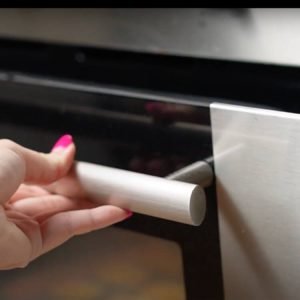
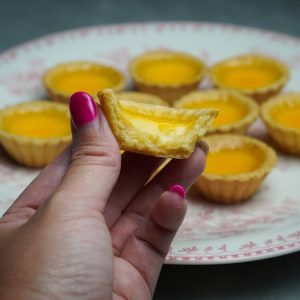
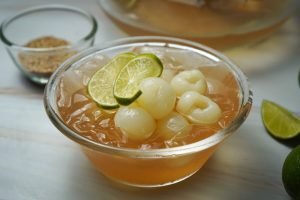 Aiyu Jelly 爱玉冰 Taiwanese Summer Dessert
Aiyu Jelly 爱玉冰 Taiwanese Summer Dessert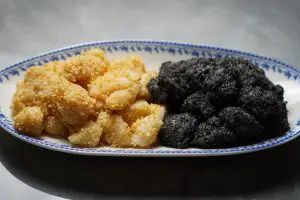 Muah Chee / Mochi / 麻糍 (Steamed or Fried)
Muah Chee / Mochi / 麻糍 (Steamed or Fried)